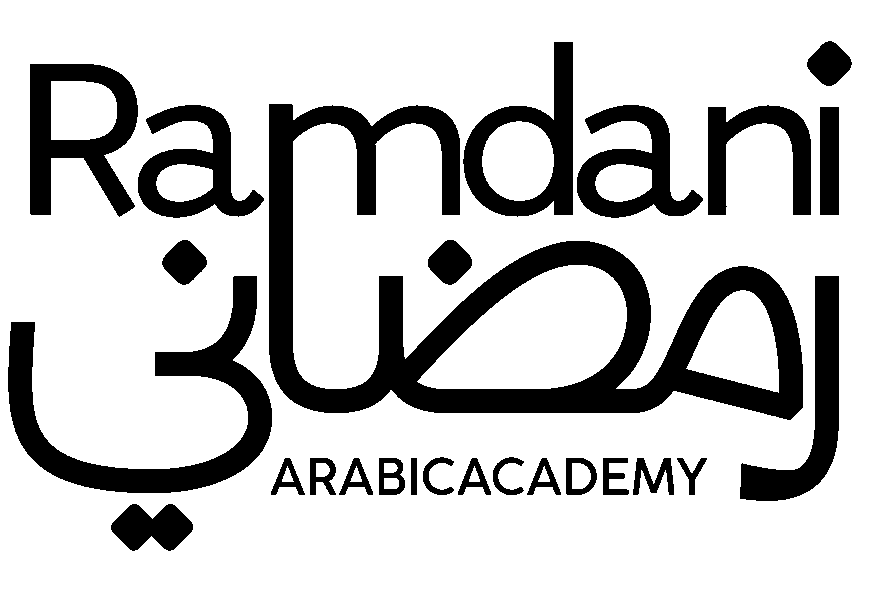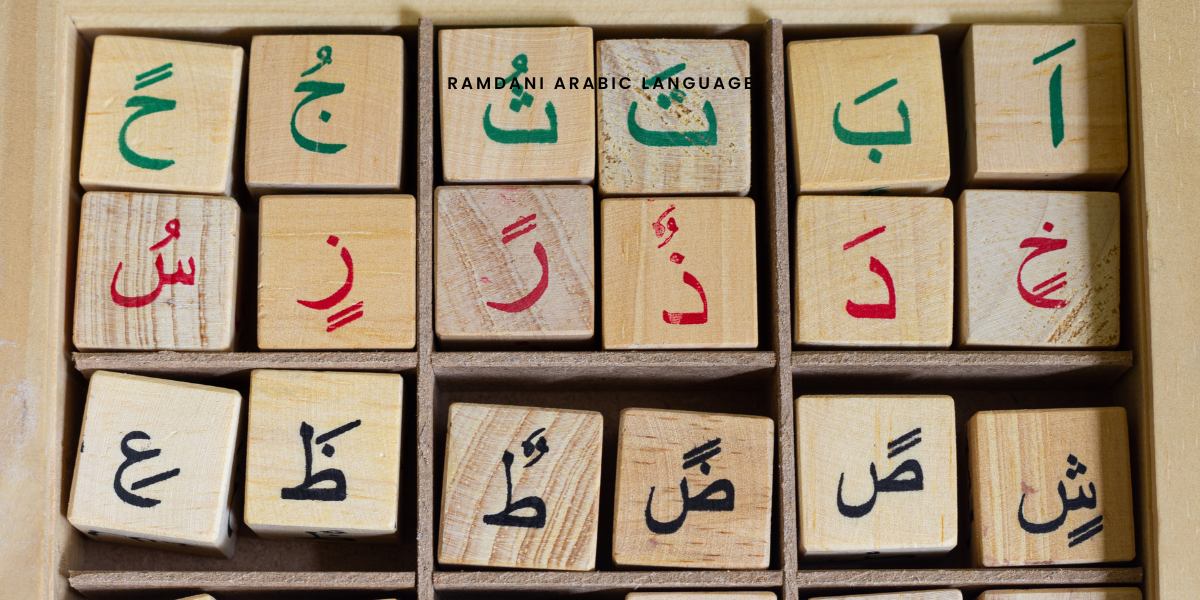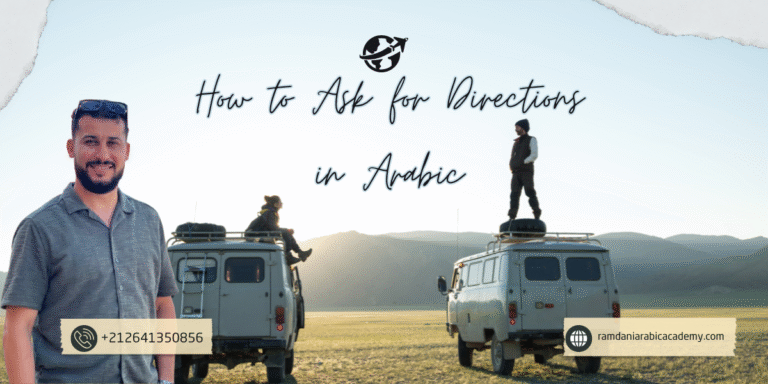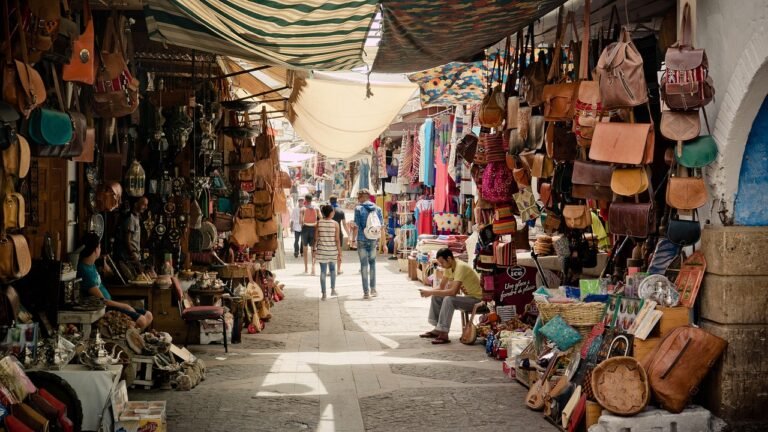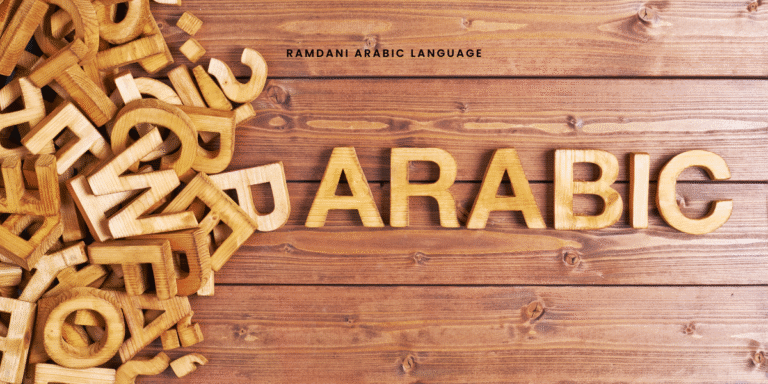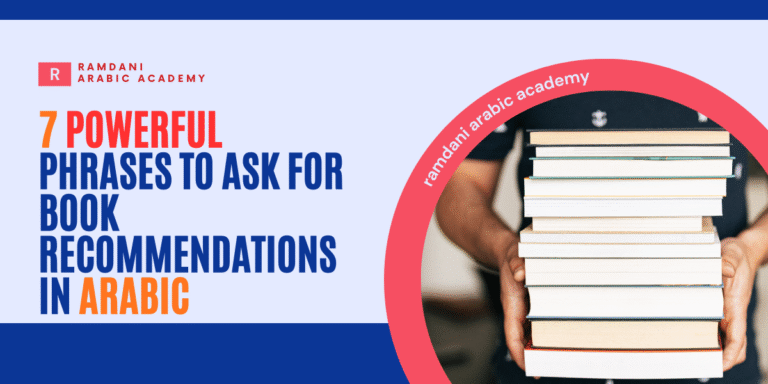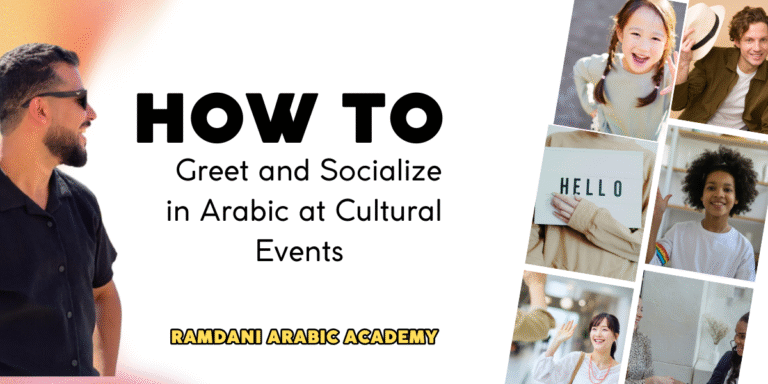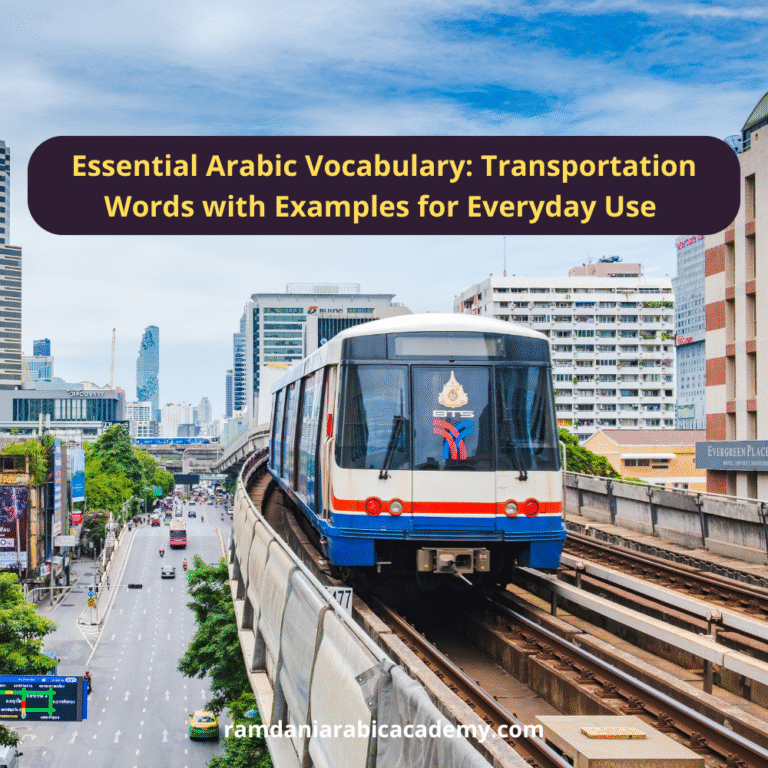10 Useful Arabic Words
When you travel or live in an Arabic-speaking country, your experience depends on how well you can connect with people. Language is the bridge. Even if you don’t master Arabic, knowing a few important words can make a big difference. It helps you ask for what you need, understand local customs, and show respect for the culture around you.
Arabic is spoken by more than 400 million people across over 20 countries. Each region has its own dialect, but the basics remain the same. A few core words can help you communicate anywhere in the Arab world, from Morocco to the Gulf. These words are simple, but they open doors. They help you buy food, take a taxi, greet someone politely, or ask for help when you need it most.
Most new learners struggle in the first days of learning Arabic because they focus on grammar before communication. The goal should be the opposite. You don’t need to be fluent to express your needs. You only need the right words and the confidence to use them. For example, when you know how to say “please,” “thank you,” or “how much,” you can handle most daily interactions with ease. People will appreciate your effort. Locals are usually patient with learners who try to speak their language.
The Arabic language is rich and structured, but it’s also practical. Every word has a root that connects to other words, which helps you build your vocabulary faster. For example, the root “k-t-b” relates to writing. From it, you get words like “kitab” (book), “maktab” (office), and “kataba” (he wrote). Understanding roots gives you a clear system to expand your knowledge without memorizing random words.
Learning the most useful words is the best starting point. Think of it as learning survival Arabic. You don’t need to know complex phrases at first. You need words that serve a purpose in real life — food, water, directions, money, time, and manners. These are your tools for daily survival and connection. When you travel, you’ll notice how often these words come up. Every interaction — buying bread, greeting a neighbor, or asking for directions — becomes smoother.
At Ramdani Arabic Academy, we’ve seen thousands of learners succeed by focusing on these essentials first. They gain confidence quickly because they use what they learn right away. We believe learning should be practical, not theoretical. When you start using the language in real situations, you retain it longer. Each word you use becomes part of your memory through experience, not repetition.
In this article, we’ll explore ten words that every learner should know when visiting or living in Arabic countries. You’ll learn what each word means, when to use it, and how it helps you handle daily needs. These words may seem simple, but they hold great value in communication. By the end, you’ll understand how small steps in language learning create big progress.
Arabic is not just a language. It’s a way to connect with millions of people who share a culture of hospitality and respect. Learning their words is learning their way of life. This is where your journey begins — with ten useful words that make every conversation easier, every encounter more meaningful, and every experience richer.
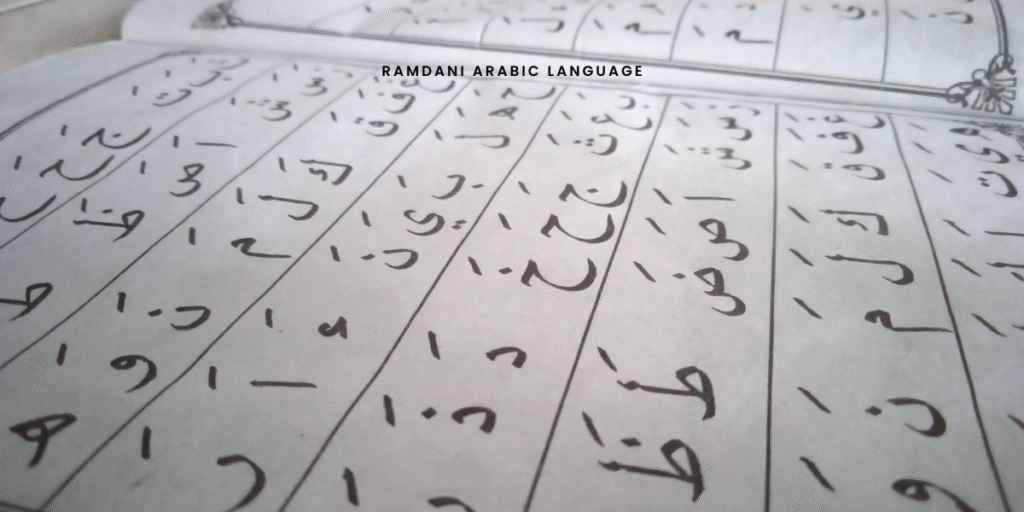
Part 1: The first useful word and its explanation
The first useful word is “Shukran”. It means “thank you.” You will hear it in every Arabic-speaking country. It’s one of the most important words you can learn because gratitude is central in Arabic culture. Using it shows good manners and earns respect.
When you say “shukran,” you do more than thank someone. You show humility and respect. You recognize the person’s effort or kindness. In Arabic societies, politeness is not optional. It’s part of daily life. People greet each other, exchange blessings, and thank one another often, even for small favors.
You can use “shukran” in almost every situation. When a shopkeeper gives you change. When a waiter brings your food. When someone gives you directions. When a stranger opens a door for you. Saying it makes interactions smoother. People respond well when they see that you make an effort to speak their language.
The common reply to “shukran” is “afwan”, which means “you’re welcome.” You’ll hear this often. In many Arab countries, people also use “la shukran” to say “no, thank you.” For example, if someone offers something you don’t need, you can reply politely with “la shukran.”
Pronunciation matters. Say it clearly: shook-ran. The “r” is rolled lightly, and the emphasis is on the first syllable. You don’t need to speak fast. Most Arabic speakers appreciate clear, simple pronunciation more than speed.
Learning “shukran” teaches more than a word. It teaches an attitude. It helps you connect with the Arabic value of respect. Gratitude builds trust, especially when you’re new in an Arabic country. Locals notice when foreigners use polite Arabic words. It makes them more open and willing to help.
At Ramdani Arabic Academy, we always tell beginners to start with “shukran.” It’s small, but powerful. Many learners share stories about how saying this word changed how people treated them. It opened conversations, created smiles, and made strangers feel closer.
When you travel, remember that simple words build bridges faster than long sentences. “Shukran” is one of those words. It’s a reminder that respect is understood in every language — but when you express it in Arabic, it reaches deeper.
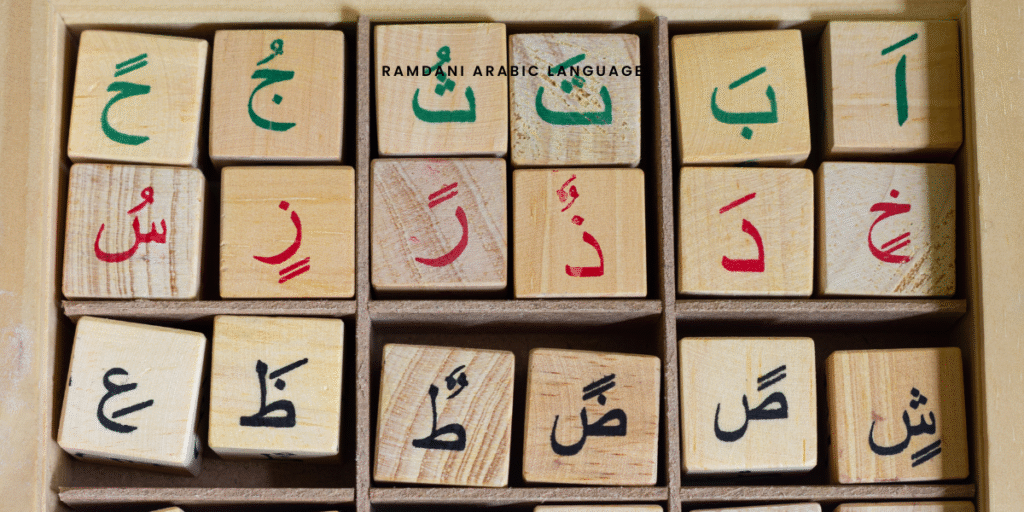
Part 2: The word “Min Fadlik” (Please)
The second useful word is “Min Fadlik”. It means “please.” You will use it often when you ask for something or need help. It’s one of the key words that show respect and politeness in Arabic-speaking cultures.
“Min fadlik” changes slightly depending on who you speak to. When addressing a man, you say “min fadlak”. When speaking to a woman, you say “min fadlik.” The difference is in the ending sound. This gender distinction is part of Arabic grammar, but it’s easy to learn.
You can use “min fadlik” in daily situations. When you order food at a restaurant. When you ask someone for directions. When you request help or a service. For example:
- “Maa’ min fadlik” means “Water, please.”
- “Iftah al-bab, min fadlik” means “Open the door, please.”
- “A’id min fadlik” means “Repeat, please.”
Using “please” in Arabic speech shows you understand the culture of courtesy. In many Arab countries, people value polite expressions. Direct speech without “min fadlik” can sound rude, even if you don’t intend it that way. Adding this word makes your tone respectful and helps avoid misunderstandings.
Pronounce it as min fad-lik. The “d” in “fadlik” is soft, and you should pause slightly between both words. Speak slowly and clearly. A calm tone makes the word sound more polite.
When you combine “min fadlik” with other basic words, your communication becomes smoother. For instance, “min fadlik” with “shukran” creates complete polite sentences. Example: “Maa’ min fadlik, shukran.” (Water please, thank you.) This pattern works in almost every Arabic-speaking country.
At Ramdani Arabic Academy, we always tell learners that “min fadlik” is more than a word. It’s a tool for showing good manners. It makes people see you as respectful and thoughtful. Learners who use it often notice that locals respond with warmth and patience.
When you travel or live in an Arabic country, small acts of politeness build strong connections. Saying “min fadlik” can make a stranger help you faster or turn a brief exchange into a friendly conversation. Every time you use it, you reflect one of the most valued parts of Arabic culture — respect through language.
Part 3: The word “Afwan” (You’re Welcome)
The third useful word is “Afwan”. It means “you’re welcome.” You use it to reply when someone says “shukran.” It’s a simple word, but it carries meaning beyond its translation. It shows kindness and humility. It tells the listener that helping them was not a burden.
You can also use “afwan” in other contexts. It can mean “excuse me” or “pardon.” The meaning depends on the situation. For example:
- When someone thanks you, you answer “afwan.”
- When you need to get someone’s attention, you can say “afwan.”
- When you accidentally bump into someone, you can say “afwan.”
This flexibility makes “afwan” one of the most useful words in Arabic. It helps you sound polite in different settings.
Pronounce it as af-wan. The “a” is soft, and both syllables are short. Keep your tone friendly and natural. Like many Arabic words, tone matters. A calm voice adds warmth and respect to your speech.
In Arabic culture, saying “afwan” is more than good manners. It reflects a mindset. It means you don’t see helping others as a burden. It shows that you value respect and human connection. When you use “afwan,” you take part in a social habit built on mutual kindness.
Many learners overlook “afwan” because they think it’s only a response word. But it’s one of the key words that make conversations smoother. At Ramdani Arabic Academy, we teach it early because it helps learners handle daily interactions with ease. When locals hear you say “afwan,” they recognize your effort and respond positively.
Use “afwan” whenever you can. It fits both formal and casual conversations. In shops, cafes, taxis, or offices, it works the same way. The more you use it, the more natural your Arabic sounds.
Politeness in Arabic is not about formality. It’s about building respect through words. “Afwan” helps you do that with one short, easy word.
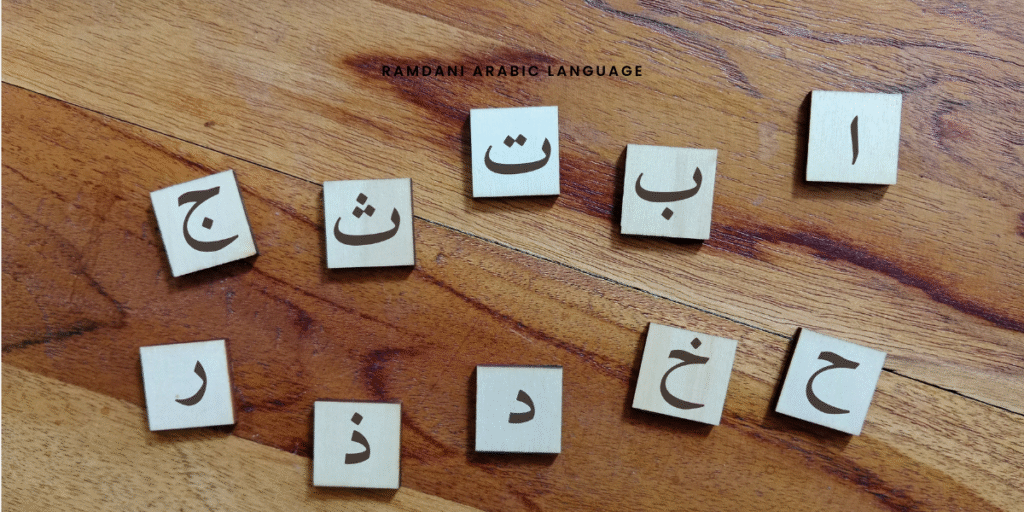
Part 4: The word “Naam” (Yes)
The fourth useful word is “Naam”. It means “yes.” It’s one of the first words every Arabic learner should know. It’s simple, short, and used everywhere. You’ll use it in shops, restaurants, taxis, and daily conversations.
Pronounce it as na-am. The two parts connect smoothly. The “a” sound in both syllables is open and clear. Avoid rushing the word. A short pause between “na” and “am” makes it sound natural.
You use “naam” when answering questions, confirming information, or showing agreement. Examples:
- “Hal anta talib?” (Are you a student?) – “Naam.”
- “Hal turid shay’an?” (Do you want something?) – “Naam.”
- “Hal fahimta?” (Do you understand?) – “Naam.”
It’s also common in polite conversations. When you speak with elders, shopkeepers, or officials, answering with “naam” sounds respectful. Using only “yes” in English or “aywa” in dialect might sound too casual in some settings.
There’s also an informal version — “aywa” — which is common in daily speech across many Arab countries, especially in Egypt, the Levant, and parts of the Gulf. “Aywa” means the same thing but is more relaxed. You can use “naam” in formal situations and “aywa” with friends or people your age.
Understanding when to use each form helps you sound more natural. For example, when talking to a teacher, use “naam.” When talking to a friend, “aywa” fits better. This awareness of tone and context is part of learning to communicate, not just translate.
At Ramdani Arabic Academy, we teach “naam” early because it builds confidence. You can’t take part in conversations without being able to agree or confirm. Many learners underestimate how much “yes” supports communication. It helps you stay involved even when you understand only part of what’s being said.
“Naam” also helps with listening practice. When you hear it in conversations, you start recognizing sentence patterns. You learn when questions are asked and how answers are formed. It’s a small word that opens big learning opportunities.
Use “naam” often. It keeps your communication polite and simple. It shows that you listen, understand, and engage. A single word can keep conversations flowing, even with limited vocabulary.
Part 5: The word “La” (No)
The fifth useful word is “La”. It means “no.” It’s one of the simplest and most direct words in Arabic, but it’s also one of the most important. Knowing when and how to use “la” helps you stay polite while setting boundaries in conversations.
Pronounce it as laa. Stretch the vowel slightly and say it clearly. The sound is soft, not sharp. Your tone changes its meaning. A calm tone makes it polite. A firm tone makes it final.
You can use “la” in many everyday situations. Examples:
- When you refuse something: “La, shukran” (No, thank you).
- When correcting a mistake: “La, hadha ghalaṭ” (No, that’s wrong).
- When you don’t want something: “La, la ureed” (No, I don’t want).
Adding “shukran” after “la” makes it polite. It’s common to say “la, shukran” in shops or markets when you don’t want to buy something. It keeps the tone respectful while being clear.
In many Arabic countries, people appreciate politeness in speech. A direct “no” without a soft tone can sound harsh. Using “la” with a gentle voice and “shukran” shows you respect the person, even when refusing.
There’s also a difference between “la” and “mish.” “Mish” means “not” and is used to make negative sentences, especially in dialects. For example, “ana mish jaa‘an” means “I’m not hungry.” But when you want to simply say “no,” use “la.”
At Ramdani Arabic Academy, we encourage learners to practice both polite and firm ways of saying “la.” Many new learners feel uncomfortable saying “no” in another language. But using “la” properly gives you control in conversations. It lets you express preference and disagreement without sounding rude.
When traveling in Arabic-speaking countries, you’ll use “la” often. Vendors might offer goods, taxi drivers might suggest routes, or locals might invite you to try something. Knowing how to say “no” politely helps you handle these situations comfortably.
The goal is balance. Be clear, but respectful. Be firm, but calm. “La” helps you communicate boundaries in a way that fits Arabic cultural norms.
A simple “la” can save you from confusion, help you express choice, and keep interactions smooth. It’s one of the smallest words in Arabic, but it carries great practical value.
Part 6: The word “Ayna” (Where)
The sixth useful word is “Ayna”. It means “where.” You use it to ask about locations, directions, or the position of something. It’s one of the first words you’ll need when navigating an Arabic-speaking country.
Pronounce it as ay-na. The first syllable sounds like the English “eye.” Say it smoothly with a short pause between both parts.
You can use “ayna” in many daily situations:
- “Ayna al-hammam?” means “Where is the bathroom?”
- “Ayna al-mat‘am?” means “Where is the restaurant?”
- “Ayna al-maṭar?” means “Where is the airport?”
You can also combine “ayna” with people’s names or things. For example, “Ayna Ahmed?” (Where is Ahmed?) or “Ayna al-maftah?” (Where is the key?).
When you travel in an Arabic-speaking country, you’ll often need to ask for directions. Knowing “ayna” helps you do it easily. You can point or use gestures while saying “ayna” followed by the word you know. Even if your Arabic is limited, people will understand what you mean.
Locals appreciate when foreigners try to use Arabic to ask for directions. It shows effort and respect. In most places, people will answer slowly or even switch to English if they notice you’re learning. But starting the question in Arabic always creates a better response.
At Ramdani Arabic Academy, we teach learners to use “ayna” early in their practice because it gives confidence to explore real environments. It moves learning from theory to action. Many learners remember their first real conversation in Arabic was asking “Ayna al-mat‘am?” or “Ayna al-maṭar?” That small success builds motivation.
Learning how to ask “where” also helps you understand sentence structure. In Arabic, “ayna” comes at the start of a question, just like in English. For example:
- “Ayna anta?” means “Where are you?”
- “Ayna taskun?” means “Where do you live?”
Using “ayna” helps you start meaningful conversations. You learn to interact, not just memorize. It’s a word that helps you move through real places — streets, shops, stations — and connect with people directly.
When you know how to ask “where,” you no longer feel lost. You can find what you need and learn through interaction. “Ayna” is a small word that gives you independence in Arabic-speaking countries.
Part 7: The word “Kam” (How Much)
The seventh useful word is “Kam”. It means “how much.” You will use it when shopping, paying for services, or asking about prices. It’s a simple word, but it is essential for everyday transactions in Arabic-speaking countries.
Pronounce it as kam. The “a” is short, and the “m” is soft. Keep your tone neutral. A polite tone is important because it affects how the person responds.
You can combine “kam” with nouns to ask the price of something. For example:
- “Kam al-khubz?” – How much is the bread?
- “Kam al-ma’a?” – How much is the water?
- “Kam al-taksi?” – How much is the taxi?
In markets, shops, or restaurants, asking “kam” is common. It helps you negotiate, confirm prices, or make decisions. Adding “min fadlik” (please) makes your question more polite:
- “Kam al-khubz, min fadlik?” – How much is the bread, please?
Understanding numbers is also helpful. Arabic uses both Eastern Arabic numerals (١, ٢, ٣) and Western Arabic numerals (1, 2, 3). Recognizing these will make it easier to use “kam” and understand prices.
At Ramdani Arabic Academy, we teach “kam” as part of essential daily vocabulary. Learners often share that this word made their first shopping experiences in Arabic-speaking countries smoother. Using “kam” correctly gives you confidence and independence.
“Kam” is also used in casual questions about quantities, not only money. For example:
- “Kam sa‘a?” – How many hours?
- “Kam kitaban?” – How many books?
Learning “kam” allows you to ask important questions without needing full sentences. It’s practical and immediate. Every time you use it, you practice interaction, pronunciation, and comprehension at the same time.
Part 8: The word “Ma’a” (With/With Me)
The eighth useful word is “Ma’a”. It means “with” or “with me.” You use it to indicate accompaniment, connection, or possession in daily conversations. It is simple but widely applicable.
Pronounce it as ma-ah. The first syllable is soft, and the second is slightly elongated. Speak clearly to avoid confusion with similar-sounding words.
You can use “ma’a” in different situations:
- “Ma’a sadiqi” – With my friend.
- “Ma’a al-ta’ām” – With the food.
- “Ma’a ana” – With me.
In practical terms, “ma’a” helps in restaurants, taxis, or shopping. For example:
- “Al-hisab ma’a shukran?” – Can we have the bill, please?
- “Ana ma’a sadiqi fi al-mat’am” – I am with my friend in the restaurant.
Adding “ma’a” to requests or statements makes your sentences clear and natural. It shows the connection between objects, people, or actions.
At Ramdani Arabic Academy, learners start using “ma’a” early because it connects vocabulary to real-life scenarios. It allows learners to express relationships between themselves and others, or between actions and objects, which is essential for meaningful communication.
“Ma’a” also helps learners build longer sentences. For example:
- “Ana ma’a waladi fi al-hadiqa” – I am with my son in the park.
- “Al-kitab ma’a al-mudarris” – The book is with the teacher.
Understanding “ma’a” improves comprehension and sentence building. It is small but powerful, allowing you to link words and create practical statements. Using it correctly makes your Arabic sound fluent and functional, even if your vocabulary is still limited.
Part 9: The word “Al-Maa’” (Water)
The ninth useful word is “Al-Maa’”. It means “water.” It is one of the first words every traveler or learner should know because you will use it every day. Whether ordering a drink, asking for something to stay hydrated, or simply talking about your needs, “al-maa’” is essential.
Pronounce it as al-maa. The “maa” sound is long, and the small pause before it makes the pronunciation clear. The glottal stop at the end is gentle, not forced.
You can use “al-maa’” in basic and practical sentences:
- “Ureed al-maa’” – I want water.
- “Hal ‘indak al-maa’?” – Do you have water?
- “Ayna al-maa’?” – Where is the water?
Adding polite words makes your sentence smoother. For example:
- “Ureed al-maa’, min fadlik” – I want water, please.
- “Shukran ‘ala al-maa’” – Thank you for the water.
In many Arabic-speaking countries, especially in hot regions, water is a vital part of daily life. Offering water is a common gesture of hospitality. When someone offers you water, accepting it is seen as polite. It’s a simple sign of respect for local customs.
At Ramdani Arabic Academy, we use “al-maa’” to teach learners how to build practical requests. It’s a good example of how one word connects to essential verbs like “ureed” (I want), “a’ṭini” (give me), and “hal ‘indak” (do you have). Learners quickly notice that with only a few words, they can express full needs.
“Al-maa’” also helps you practice the definite article “al-,” which means “the.” Once you understand “al-maa’,” you can apply the same rule to other nouns like “al-bab” (the door) or “al-bayt” (the house).
Water connects to daily survival and comfort. Knowing how to ask for it and recognize it in conversation gives you confidence. When you can say “al-maa’” clearly, you already know one of the most used words in Arabic daily life.
Part 10: The word “Assalamu Alaikum” (Peace Be Upon You)
The tenth useful word is “Assalamu Alaikum.” It means “Peace be upon you.” It is the standard greeting in Arabic-speaking countries and one of the most recognized phrases in the Arabic language. It expresses respect, peace, and goodwill.
Pronounce it as as-sa-laa-mu a-lay-kum. The “s” sound is soft, and each syllable flows naturally. You don’t need to say it fast. A calm and clear tone gives it sincerity.
You use “Assalamu Alaikum” when greeting anyone, whether you know them or not. It fits both formal and informal situations. When someone says “Assalamu Alaikum,” the proper reply is “Wa Alaikum Assalam”, which means “And peace be upon you too.”
This greeting carries cultural and social weight. It’s more than a word. It’s a gesture of respect and goodwill. It opens conversations on positive terms. In Arabic culture, greetings are important. Starting a conversation without one can seem impolite.
You can use “Assalamu Alaikum” in many settings:
- When entering a shop or office.
- When meeting new people.
- When joining a group or entering a home.
At Ramdani Arabic Academy, we teach learners that greetings reflect values. In Arabic, “Assalamu Alaikum” is more than etiquette; it’s a sign of peace. Using it correctly helps learners integrate better in Arabic-speaking communities. It breaks distance and builds trust.
Even if you don’t speak much Arabic, this one phrase makes a strong first impression. Locals respect it. It shows cultural awareness and friendliness. Whether in Morocco, Egypt, Saudi Arabia, or Jordan, this greeting is universal.
When you travel or meet Arabic speakers, say “Assalamu Alaikum” with a smile. You will likely hear “Wa Alaikum Assalam” in return. That short exchange sets a friendly tone for any interaction.
Language learning begins with connection. This greeting is one of the strongest ways to connect. It’s simple, respectful, and deeply rooted in the Arabic way of communication.
Final word
Learning Arabic begins with small steps. Ten simple words can change how you experience the Arab world. Each one opens doors to daily communication. “Shukran” shows gratitude. “Min fadlik” adds politeness. “Ayna” helps you find your way. “Assalamu Alaikum” builds respect. Together, they give you the foundation to speak and connect.
Language learning is not about memorizing long lists. It’s about using words that matter. When you use these ten words, you start understanding how Arabic speakers think, feel, and interact. You build confidence every time you speak. You begin to see progress not in textbooks, but in real conversations.
If you want to learn Arabic effectively, focus on practice. Listen to native speakers. Repeat the words aloud. Use them in daily life. Ask questions. Make mistakes and learn from them. Every small effort counts. Real progress comes from consistency, not speed.
At Ramdani Arabic Academy, we help learners move from basic vocabulary to full communication. Our lessons and articles are designed for people who want to speak Arabic naturally and confidently. We teach practical Arabic — the kind you can use right away. Learners from around the world study with us online to master Modern Standard Arabic and dialects used across different regions.
We believe learning Arabic is not only about the language. It’s about understanding culture, respect, and human connection. When you greet someone with “Assalamu Alaikum” or thank them with “Shukran,” you’re doing more than speaking. You’re building trust and friendship. That’s what makes learning Arabic valuable.
As the founder of Ramdani Arabic Academy, I have seen learners transform their experience with just a few simple words. They stop relying on translation and start communicating with confidence. I built this academy to make Arabic learning simple, useful, and accessible to everyone — no matter where they live or what their background is.
Arabic is one of the oldest and richest languages in the world. Learning it connects you to history, culture, and millions of people. These ten words are your start. Use them often. Let them guide you toward fluency, one real conversation at a time.— Ramdani Mohamed
Founder, Ramdani Arabic Academy
